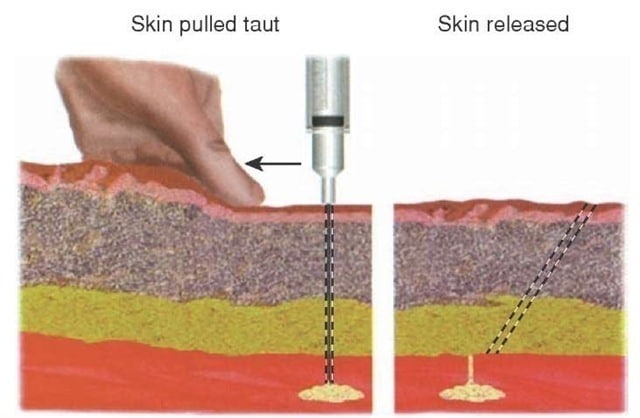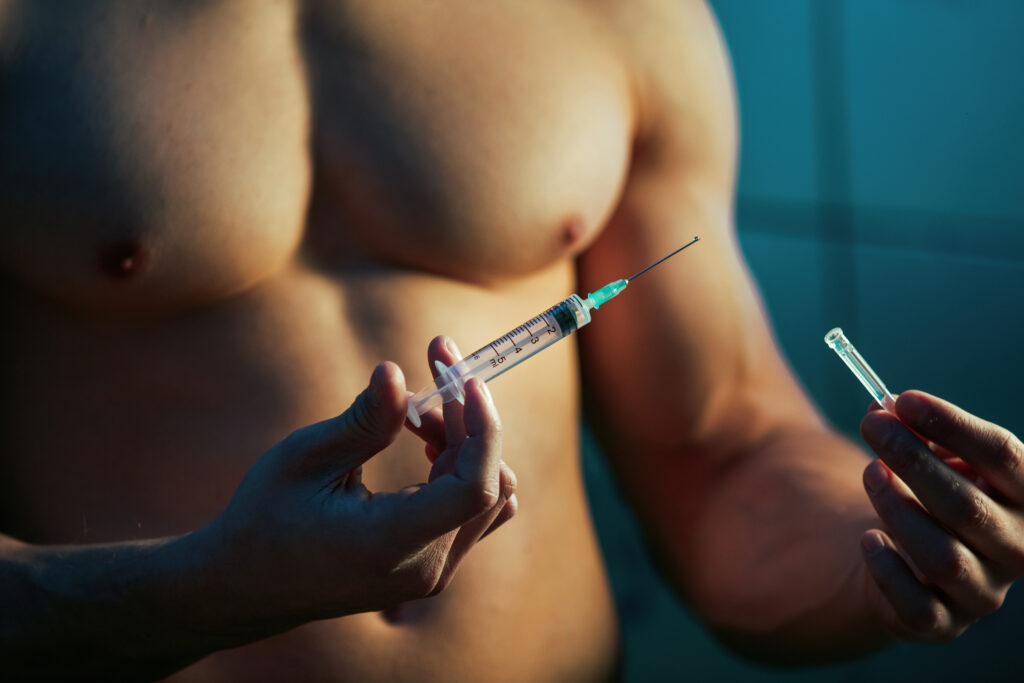Today we at Legacy Pharma wanted to bring to you a total and complete Steroid Injection Guide: Filled with best practices, methods, and more. When it comes to boosting your performance with injectable drugs, there are two main types you need to know about: steroids (AAS) and peptides.
Steroids (AAS): These are anabolic and androgenic compounds. Essentially, they’re modified versions of the testosterone molecule, including testosterone itself. Some popular ones are testosterone, Deca Durabolin, Dianabol, and Primobolan. These are the go-tos for building muscle and increasing strength.
Peptides: This is a broad category covering a variety of substances that trigger different effects in the body. Not all peptides are used for bulking up or boosting strength. Some common examples include GH, IGF-1, Insulin, and Melanotan.
In this guide, we’ll focus on the injection practices for AAS. There’s a lot to cover, so we’ll leave peptides for another time and give them their own guide.
Anabolic Steroid Injection Methods
When it comes to injecting performance enhancers like steroids, there are two main methods:
Intramuscular Injection: This is where you inject directly into the muscle.
Subcutaneous Injection: Also known as “Sub-Q,” this method involves injecting into the layer between your skin and muscle.
Most people prefer the intramuscular (I.M.) method for their AAS injections. However, subcutaneous injections are also an option, depending on the drug and personal preferences. It really boils down to what you’re comfortable with and what works best for your goals.

Injection Techniques
There are a couple of techniques you can use to prevent leakage of the injected substance and ensure it stays deep within the muscle. These are the Z-track technique and the air bubble technique. While not strictly necessary, these methods help minimize oil loss due to seepage.
Z-Track Technique: This method helps prevent leakage by displacing the skin and subcutaneous tissue before injecting.
- Prepare your syringe and get ready to inject.
- With your free hand, pull the skin at the injection site ½-1 inch to the side.
- While holding the skin in this stretched position, give the injection.
- Immediately after removing the syringe, release the skin.
This technique works best in areas with loose skin. It’s trickier to use on areas where the skin is taut.
Air Bubble Technique: Another way to prevent leakage is by including a small air bubble in the syringe. This bubble helps push the medication deep into the muscle and prevents it from seeping back out.
The air bubble technique involves injecting a small amount of air at the end of an injection. In order to perform this technique prepare your syringe and be ready to inject. When the syringe is in hand, pull ½ cc of air into the syringe. Just prior to and throughout the injection, make sure the needle is pointing down, so that the air floats to the top of the barrel (near the plunger) and is the last thing to be injected into the muscle, as it is this small air bubble which will help to seal off the opening and prevent leakage.

What Kind of Syringe Should I Use?
When it comes to performance enhancement injections, choosing the right syringe and needle is crucial. Here’s a breakdown of what you need to know:
Standard Syringe Specifications
- For Steroid Injections: Use a 23-25 gauge needle, 1/2 to 1.5 inches in length, and a 3 cc syringe.
- For Peptide Injections: Use a 28-31 gauge needle, 5/16 to 1/2 inch in length, and a 1 cc syringe.
Gauge Numbers
When you’re looking to build size and strength, you’ll mainly be dealing with AAS (Anabolic-Androgenic Steroids) and peptides. Here’s a quick guide:
- Steroids (AAS): Most steroids are oil-based, meaning the steroid molecules are suspended in oil, which acts as a carrier. Oil is chosen because it resists bacteria better than water and is cheaper. However, its higher viscosity (thickness) means you need a thicker needle.
- Needle Gauge: The gauge refers to the needle’s thickness. The rule of thumb is to choose the highest gauge number that still allows the oil to flow through. This reduces discomfort and minimizes scar tissue build-up. Most steroids today fit through a 25 gauge syringe, which should be your go-to.
Standard Needle Lengths for Injection
- Glutes: 1-1.5 inches
- Delts: 1 inch
- Quads: 1 inch (some people can use a 1/2 inch needle, depending on how lean they are)
- Biceps: 1/2-1 inch
- Triceps: 1/2-1 inch
- Calves: 1/2 inch
- Traps: 1/2-1 inch
- Lats: 1 inch
These are average lengths, and you can choose between 1/2 to 1.5 inches based on the body part you’re injecting.
CC’s & ML’s
- Units of Measurement: “CC” stands for cubic centimeters and is identical to “ML” (milliliter). So, 1 cc equals 1 ml.
- Syringe Capacity: Most 23-25 gauge syringes hold 3 cc’s. Always specify what you need when ordering. It’s practical to purchase 3 cc syringes, as many users inject more than 1 cc at a time.
Note on Water-Based Injectables: These are less common due to higher bacteria growth rates compared to oil-based steroids. Water-based injectables include some Testosterone suspensions and injectable Winstrol. While needle length and cc count remain the same, gauge numbers can vary. Ultra-micronized water-based products can use higher gauge needles, while non-micronized products need lower gauge needles.
Where Are The Best Injection Sites?
Where to Inject: Tips for First-Time Users
When you’re gearing up for your first injection, one of the biggest questions is, “Where should I inject?” While there’s no one-size-fits-all answer, the most common muscles for beginners are the glutes and delts. These areas are relatively painless, have fewer major veins and arteries, and have a lower density of nerves. Quads are another popular choice, but you need to be a bit more cautious due to the higher number of nerves, veins, and arteries.

Ideal Injection Sites:
- Glutes and Delts: These are the go-to spots for most beginners.
- Quads: Popular but requires more care.
- Avoid Small Muscles: Steer clear of areas like the forearms, hands, feet, and neck.
Choosing the Right Spot Within the Muscle:
- Delts: All three heads are suitable, but the side and rear heads are often more comfortable.
- Glutes: Most of the glute area is fine, but avoid the far sides where the sciatic nerve is located.
- Quads: Stick to the quadriceps muscles, especially the vastus lateralis and rectus femoris. Avoid the inner thighs.
How Many CC’s Can I Inject?
Primary Injection Sites:
- Glutes: Up to 3 cc
- Delts: Up to 2 cc (3 cc is doable with a 1-inch needle, but glutes or quads are better for larger volumes)
- Quads: Up to 3 cc (use a 1-inch needle for more than 2 cc, a 1/2 inch needle is fine for under 2 cc if you’re lean)
Secondary Injection Sites:
- Biceps, Triceps, Calves: Up to 1.5 cc
- Traps, Lats: Up to 2 cc
Beginners should stick with primary sites until they’re comfortable with the process. Secondary sites have more nerves and blood vessels, and can be more painful.
Rotating Injection Sites
Over time, injecting in the same spot can cause scar tissue to build up, which can weaken the muscle, impair growth, decrease flexibility, and increase injury risk. To minimize this, rotate your injection sites regularly. Here’s a sample rotation plan:
Example Rotation Plan:
- Upper-left glute
- Upper-right glute
- Upper-right delt
- Upper-left delt
- Upper-right quad
- Upper-left quad
- Lower-right glute
- Lower-left glute
- Lower-right delt
- Lower-left delt
- Lower-right quad
- Lower-left quad
- Repeat
Rotating injection sites helps reduce scar tissue, abscesses, and infections. In severe cases, infections might require surgery and removal of infected muscle tissue, leading to permanent damage. Proper injection practices are crucial for avoiding these issues.
How Often Should I Inject?
Determining how often to inject a particular steroid depends on a few key factors, with the primary one being the half-life of the steroid. Simply put, longer-acting steroids need less frequent injections, while shorter-acting ones require more frequent dosing. The half-life is influenced by the ester attached to the steroid, which extends its active life in the body.
Understanding Esters:
Esters are molecular modifications added to steroid hormones to prolong their effect in the body. By examining the ester, you can determine how often you need to inject.
Common Steroid Esters and Injection Frequencies:
- Acetate: Daily to 3 times weekly
- Propionate: Every other day (EOD) to 3 times weekly
- Phenylpropionate: EOD to 3 times weekly
- Caproate: 3 times weekly
- Isocaproate: 3 times weekly
- Enanthate: 1 to 2 times weekly
- Cypionate: 1 to 2 times weekly
- Decanoate: 2 times weekly
- Undecanoate: 2 times weekly
- Undecyclenate: 2 times weekly
Esterless Steroids:
Some injectable steroids, like Winstrol suspension or Testosterone base, don’t have esters and need daily injections for optimal results. While you can inject these every other day (EOD), it’s not ideal and should be avoided if possible.
Special Circumstances:
There are instances where esterless steroids can be used less frequently or on an as-needed basis. For example, testosterone suspension or base might be administered immediately before training, a lifting competition, or a fight to provide a burst of testosterone.
By understanding the type of ester attached to your steroid, you can effectively plan your injection schedule to ensure the best results while minimizing injection frequency.
